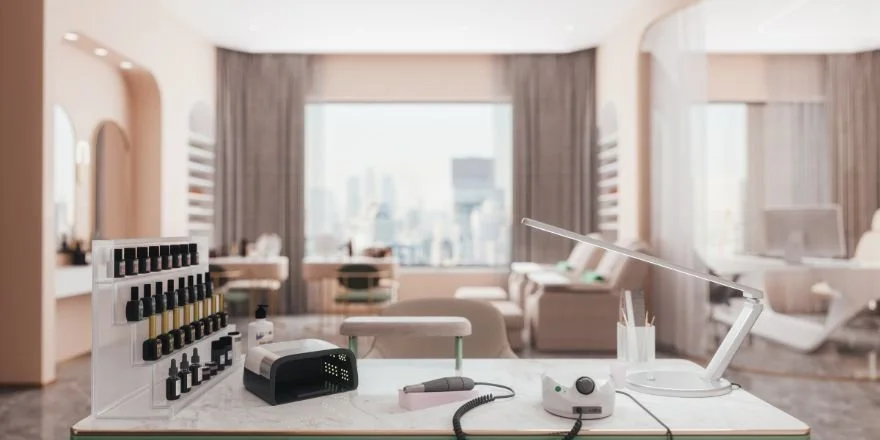From Relaxation to Transformation: The Role of Interior Design in Luxury Spas
There’s something profoundly transformative about walking into a well-designed luxury spa. It’s not just the scent of eucalyptus in the air or the softness of the lighting—it’s the way every design element gently guides your body and mind into a state of calm. In the world of high-end wellness, interior design isn't an afterthought; it’s the core of the entire experience.
Why Design Matters in High-End Spas
In luxury spas, design goes beyond aesthetics. It sets the tone for emotional healing and deep relaxation. From the layout of the reception area to the textures on a treatment room wall, every detail is intentional. When I design spa spaces for wellness entrepreneurs and hospitality developers, my focus is on creating environments that silently speak to serenity and trust.
Sensory Design: Creating Emotional Wellness Through the Senses
What truly elevates a spa experience is how it engages the senses:
Aromatherapy: Essential oils like lavender or neroli can lower cortisol levels and shift the mind into a restorative state.
Acoustics: Soundproofing treatment rooms and adding water elements in relaxation areas can drastically reduce mental fatigue.
Textures: Soft organic linens, polished stone, and warm wood surfaces invite touch and create a feeling of grounded luxury.
These elements work together to support emotional wellness—a non-negotiable standard in modern luxury spas.
Key Zones That Define the Spa Journey
Each area in a luxury spa must serve a distinct purpose, both functionally and emotionally:
Reception Area: This is the first impression. I often use calming colors, curved lines, and ambient lighting to create an immediate sense of arrival and decompression.
Treatment Rooms: These are private sanctuaries. A good design includes dimmable lighting, temperature control, and hidden storage for a seamless visual flow.
Relaxation Areas: Here, comfort is king. Chaise lounges, calming sounds, and a soothing view (like a vertical garden or reflecting pool) allow the mind to linger in a restorative zone.
Hydrotherapy Zones: These require strategic layout and material choices that support both safety and luxury. Non-slip stone, thermal lighting, and water filtration visibility all come into play.
Wellness Design Trends in the U.S.
The wellness industry in the U.S. is evolving rapidly, and interior design is reflecting these changes. Some of the most relevant trends I’ve incorporated into spa projects recently include:
Mindfulness Spaces: Minimalist meditation zones with natural materials, filtered daylight, and integrated sound therapy.
Cryotherapy Rooms: Sleek, clinical spaces that still feel inviting through the use of neutral palettes and soft indirect lighting.
Salt Therapy Rooms: Designed with pink Himalayan salt walls and ergonomic recliners to amplify both health benefits and visual impact.
Each of these innovations demands a nuanced design approach that blends cutting-edge functionality with a serene aesthetic.
Designing for the Luxury Wellness Entrepreneur
When I consult with wellness entrepreneurs, especially those developing spas within hotels or wellness resorts, the goal is always to create spaces that are not only beautiful but deeply intuitive. A successful luxury spa design communicates the brand’s philosophy through spatial storytelling.
Lighting becomes your narrator, materials your plot, and layout your pacing. In luxury, people aren’t just buying treatments—they’re buying an emotion, an escape, a transformation.
The Psychology Behind Every Curve and Color
Color psychology plays a massive role. Soft neutrals like taupe and ivory soothe, while muted greens and blues support healing and balance. Rounded architectural features—arches, soft-edged furniture—reduce tension and offer a subconscious cue to relax.
Designing a luxury spa is like composing a piece of music: you want harmony, flow, and a crescendo of calm that culminates in total mental and physical renewal.
Challenges in Designing High-End Spas
While the vision is grand, the process isn’t always simple:
Sound control can be challenging in multi-use wellness spaces.
Material durability must be balanced with luxury—especially in wet zones.
Client expectations are exceptionally high; every choice must feel custom.
That’s why I always blend strategy with artistry, creating layouts that serve operations while delivering unforgettable ambiance.
Final Reflection and Invitation
Interior design in luxury spas isn’t just about how a place looks; it’s about how it feels. It’s the silent partner in every massage, every sauna session, every breath taken in a salt room.
If you’re a wellness entrepreneur or developer ready to create a spa that truly transforms, I’d love to help bring that vision to life.
Let’s design spaces that don’t just relax—they heal, inspire, and elevate.
Related Posts
Modern Luxury Interiors in Hudson Yards | Tech-Integrated High-Rise Living
Coastal Refinement: Luxury and Functional Interiors in Pacific Palisades
Capitol Hill Luxury Interiors | Executive-Grade Design by Arei


